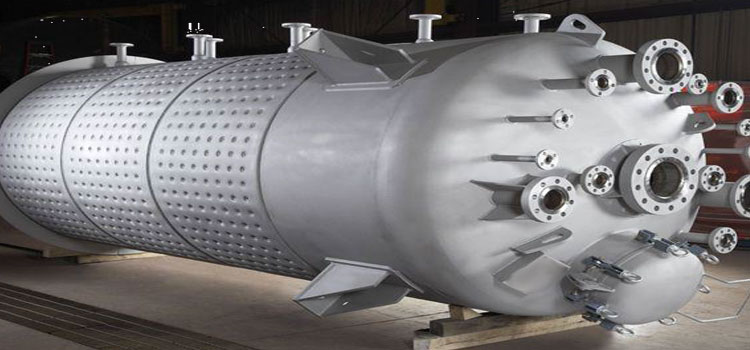INDUSTRIAL PRESSURE VESSEL

INDUSTRIAL PRESSURE VESSEL
WHAT IS AN INDUSTRIAL PRESSURE VESSEL?
Industrial pressure vessels are deliberately manufactured, encased containers designed to hold either gases or fluids at an altogether unexpected pressure in comparison to the encompassing air pressure. These vessels have an assortment of purposes in the industrial market and the private area. Pressure vessel manufacture and activity present inborn risk. So there are rigid guidelines on the manufacturing of pressure vessels by designing specialists.
DIFFERENT TYPES OF PRESSURE VESSELS
Theoretically, pressure vessels can take different shapes. Be that as it may, the most widely recognized shapes are cylinders, spheres, and cones. The mix of a long cylinder with two caps (heads) is a typical design. Industrial manufacturers typically offer a difference of either ASME standard or customized pressure vessels. Most commonly using carbon steel or stainless steel for oil/gas and water compartments. These pressure vessels are delegated Type I-Type IV.
USES OF PRESSURE VESSEL
Most of pressure vessels are for industrial use. Some private sector utilizes include high temp water storage tanks and plunging cylinders. Industrial utilization for pressure vessels includes refining towers, hydraulic repositories, and regulation of liquefied gases. Industrially, pressure vessels can be utilized for high-pressure or low-pressure control, contingent upon the need of the customer and the materials utilized. They can likewise be utilized for both cooling and process warming. Just as a methods for accomplishing optional control in handling materials.
For use with either gases or liquids, pressure vessels can be utilized couple with electric drenching heaters. Industrial versions of these heaters accomplish the warming of different substances (water, oils, gases, and solvents) through direct contact. Immersion heaters can be mounted on a pressure vessel through flanged, welded or strung associations. The blend of electric immersion heaters and pressure vessels is best for heating gases and fluids, just as for producing steam.
MANUFACTURE PROCESS
Most pressure vessels, both for private and industrial uses; utilize different types of steel – especially carbon steel and stainless steel. Singular steel parts are welded together to make pressure vessel cylinders or spheres. To stay away from mechanical trade off through the welding process, specific safeguards are taken in deciding the properties of the steel that is utilized in the produced parts.
These insurances guarantee the mechanical strength of the materials, just as the sufficiency of the completed pressure vessel. For example, designing norms right now necessitate that lone steel with high effect resistance for use in fabricating pressure vessels. For certain uses of pressing factor vessels made out of steel, engineering principles additionally direct the utilization of an extraordinary erosion resistant material.
Pressure vessels are likewise fabricated utilizing a partially load-bearing liner, produced using metal, clay, or a polymer. This liner not just helps with bearing the load of the inside pressure, yet in addition protects the vessel from the contained substance and ensures against leaking. Pressure vessels should follow to severe manufacturing guidelines for fabrication.





